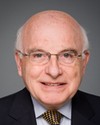Mr. Speaker, I think it is important to note that while it is the government's point of view that it is going to the people and consulting, it is interesting to note that the Conservatives did this after Christmas when they were looking for replacements because their five priorities, according to them, had been completed. The government was searching for new ideas.
The government was circumventing what it knew was a proposal the NDP was putting forward to the House of Commons. My colleague has mentioned that and we will be debating it in the House.
With respect to my colleague from the Ottawa Valley, I beg to differ in terms of the integrity of the process. The Conservatives will have the process controlled, as my colleague said, by the PMO. They did this seemingly out of nowhere. It was not debated in the House. It certainly had been debated in committee. The previous government had failed to do it. We want the process to be owned by Parliament and not announced by a minister right after Christmas to denote that the government is actually doing something on this issue.
My party begs to differ on the integrity of the intent of where the government is going with consultation. We will deal with that for sure next week. There will be a debate on that point.
I would like to ask my colleague about the whole process of having first nations vote. Are there barriers in the bill to first nations? Have we heard from first nations at committee what an election will mean for the people in her region? If so, will it be a barrier that changes the legislation? What does the member think the outcome will be in terms of voter participation for aboriginal people? What kind of action does she think will be taken by aboriginal people themselves or people who advocate for them in terms of a legal process or procedure?




